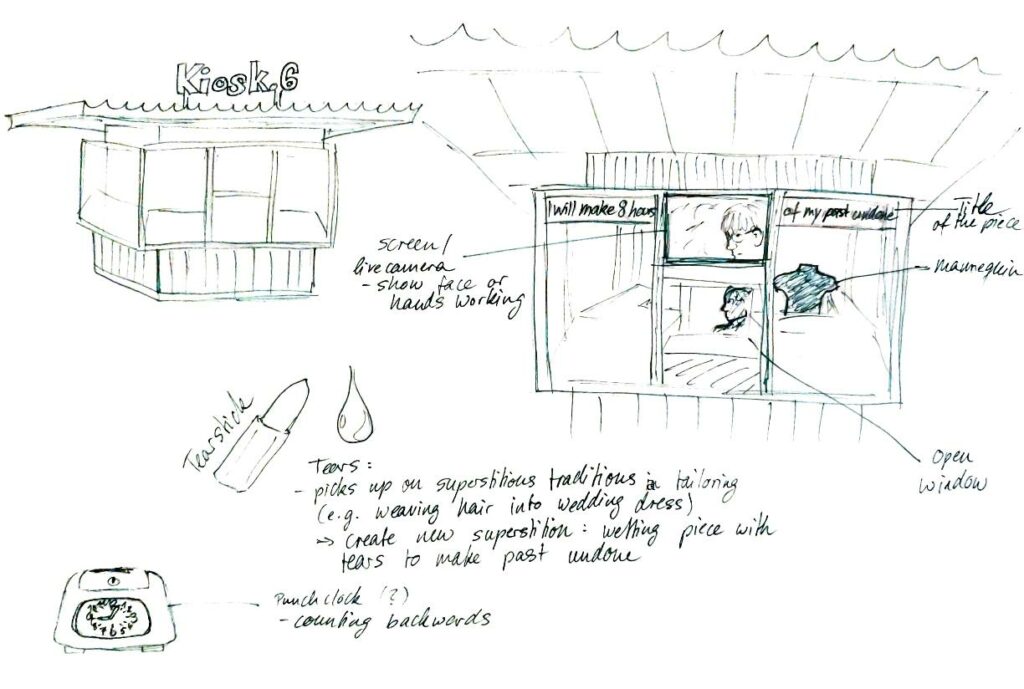The aim of this project is to create a performance that will last for eight hours – the normalized span of a working day (at least in Western-European conceptions of employment). The performance refers to my personal past, working as a tailor for several studios and workshops.
I will invest eight hours of labor in undoing my own work by taking apart a jacket that I have made myself (within more than 60 hours of handcrafting).
The performance should take place in a shop window.
The performance will take place during summaery 2023.
The project poses questions of what it takes to undo or erase – what can possibly be undone through the process of taking apart and what new things, objects, ideas, feelings, memories, and values emerge from it?
Is it possible to undo work? And with it erase passed time? Ultimately, will it be possible to undo time?
Performance Score:

+ The performance will happen inside Kiosk.6 at Sophienstiftplatz, Weimar.
The performance will take 8 hours. Within the 8 hours I will take apart a jacket that I have made myself during my apprenticeship stitch by stitch.
+ With me in the Kiosk there will be the jacket, a chair, the tools I need to take it apart, an empty mannequin, a punchclock and a camera. The singled out pieces of the jacket will fill up the window displays bit by bit.
The camera will be directed at my face, covered in tears, or at my hands by turns.
+ The front window of the kiosk will be open to enable interaction with passers-by.
Above the window there will be a screen showing what the live-camera captures.
Next to the screen the title of the performance is displayed.
+ Every hour (starting on hour 0) I will punch the punchclock, that is programmed to count backwards. I will also use a tear-stick to make my lacrimal sacs produce tears.
+ The performance ends when the 8 hours have passed. By the end all pieces of the jacket shall be detached from each other.
Why Tears?
In tailoring, like in many artisan traditions, there are a lot of superstitions intertwined with the craft. They mostly connect with abjects of the body of the artisan, produced while working on a piece. For example: In Germany, when making a wedding dress, a drop of blood should be placed somewhere at the inlay – which is supposed to bring good luck and help for a happy marriage (it also used to symbolize bloodline and a mother’s grieve, as the mother of a bride was supposed to sew her wedding dress). In France, unmarried embroiderers would sew in one of their own hair into a wedding dress, in order to be the next one to marry.
I decided to create a new superstitious tradition, making use of my tears. By crying while opening the seams of my jacket, I can make the past undone.
At the same time, the meanings of the tears – like those of the drop of blood – are manifold. They symbolize superstition, but they could also flow because of grieve, trauma, fear, melancholy, or relieve. They catalyze negative emotions and wash them out.